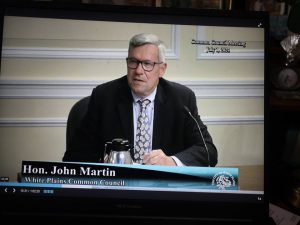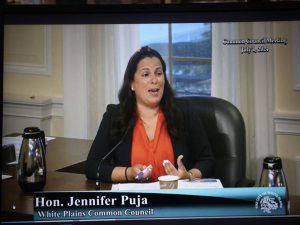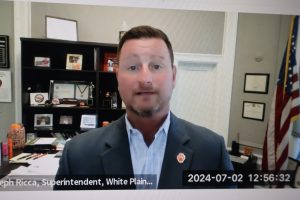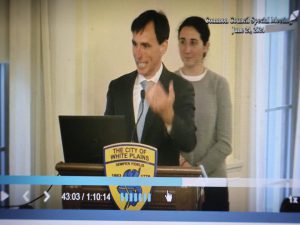Hits: 193

WPCNR NEWS & COMMENT By John F. Bailey. July 4, 2024 Reprinted from the White Plains CitizeNetReporter, June 30, 2018:
I did not go to the fireworks in White Plains New York USA.
There should be no fireworks anywhere in America today July 4.
Because there is little to celebrate about America anymore.
What Americans used to celebrate on July 4 in the past no longer exists.
It is a memory, a once shining hope the world always looked to for inspiration.
That America is forever gone.
I miss it so.
We may never see respect and admiration from the world we once had again.
Our reputation for standing up for the good, the decent, and the just has been smeared and shattered by persons who should have known better.
America to the rescue no more. I was always proud of that.
Unselfish acceptance of persons in trouble coming to our shores to start a new life: the Irish, the Germans, the Italians, Latinos, Africans, Asians, Muslims– has been callously, proudly,viciously attacked and not adequately protected by our “leaders.”
Both houses of congress and a mean-spirited selfish man have aroused hatred of the different, the oppressed, the persecuted, and the poor, in citizens who should know better.
There but for the grace of God go you and I, Mr. and Mrs. And Ms. America who collectively bear full responsibility for the death of the America Dream, by not paying attention, and buying into a line and a hate and politiicians’ indifference.
How quickly America’s heart hardened to stone and stopped beating.
Cruelty rationalized. Hate defended. Discrimination championed. Truth attacked. Help denied the needy.
That was never the American Way.
Eight years is all it has taken.
This swift decline continues into madness.
A year of a media circus campaign followed by the nomination of “An American Strongman,” a man of the people champion who spoke of “Making America Great Again.” On the way perhaps never to return, thanks to the decision Monday of the Supreme Court which apparently cannot not read the Constitution of the United States to grant a President immunity for official acts.
Don’t they know what started the American Revolution? What sophists! These are the kind of judges that condemned Socrates to death because he was inconvenient.
The media have been playing both ends against the mid dle, being complicit publicizing dutifully the ranting of those who would change American government. Because they were “good copy.” “Everything is copy,” it has once been said by Nora Ephron’s mother. But no media judgment was used. Nothing said was censored or ignored. The media were putty in this man’s hands. Criticism was fake news. Then the claims of the stolen election.
The man who condoned and popularized hatred of his opponents, who courted the cooperation of an enemy of America to influence his election, and who reveled in his denigration of women and the weak was elevated to an exulted level. The man who loved firing people.
His opponent in the election underestimated him. She failed to grasp the visceral violence he aroused in voters—voters who only saw the promise of their personal getting even with their perceived tormentors and disregarding the premise of this very mastermind.
Half of the voters in the country ate his message up.
That horrendous campaign has been followed up with a march on American values that, like those before him: Mongols, Huns, Cossacks, Barbarians and Nazis rampaged across Europe with sword and violence like the Roman Empire.
The weapons today are microphones, videos, propaganda, slogans, websites, and big lies that play as convenient truths, executive orders laying waste to reason and morality in this nation, forsaking our friends of the past and uplifting the evil leaders of the world for admiration. Initiatives ineptly executed, inappropriate, and bungled because of the inability to manage. Rewriting history.
I and you have seen 8 years dismantling rights taken for granted by Americans. Courts ruled by political tools not men and women of integrity, compassion, who wear their robes to right wrongs.
Justices making rights-robbing decisions virtually weekly. Leaders in cabinet positions opposed to the missions of their agencies turning a blindeye to companies that kill, gouge, fire and oppress their workers. Corrupt, price gouging businesses, corner-cutting businesses making decisions that kill hundredss in airplane crashes, and creation of killer pain drugs.
How great are we now?
The promise of America has been perhaps forever broken.
How great are we now?
It is embarrassing to be an American for what this neo-Nazi movement is doing.
As fireworks explosions are prepared to celebrate a government that now rips children away from families at the border . Political decisions to block entrance to the U.S. Adequate records not even being kept. Are photographs being taken of the children already in custody with their parents? Who knows? Reporters have not even documented the process of what happens in the separations. Mayor De Blasio was not even informed of immigrant children being flown into New York City for placement. the Supreme Court decides not to let homeless sleep in the streets. Where do they go next? Our government allows states to bus immigrants into other cities and does not send them back, I repeat does not send them back!
Now America, look at you: America has “Children Concentration Camps.”
Look at you America, you now are going to test children’s DNA with the parents who brought them to make sure they are not “Fake children.”
America did not used to be afraid of children. afraid of people fleeing their countries.
But hate was always under the surface that the premise of America had to always fight. Hate is always poised to raise its horror, its ugliness, its indifference to the suffering of others, because it is easy to ignore the unpleasant and blame their plights as being their own fault.
Slavery, the segregation of the South and the North (remember redlining?). Other than the My Lai massacre during the Vietnam War, and the Cavalry revenge massacres at Wounded Knee and the Washita River, and Andrew Jackson’s Trail of Tears (the Cherokee Indian death march), and the burning of Atlanta, and Bloody Kansas, we have forgotten our humanity conveniently in favor of the easy emotion: hate. Worse, indifference.
Look at you, America: Religious freedom for all. No more. Muslims are being ostracized by travel bans.
In fact the clergy, the Christians in America, I call you out: What would Jesus say about your failure to take in strangers or your condoning (as a matter of faith for crying out loud!) policies of retribution to come?
Look at you, America, how quickly what you have built in 248 years has been ripped away.
Look at those fireworks, and this year they represent an America flaming apart with hate.
Look at what it takes to be an American of the past now who remembers the pride I took in America.
You are a drifter still believing in freedom and truth, justice and the American Way in your heart, mourning what America once was and is no more. Worry. Anxiety at the insanity of those so close to taking over the country and having their way with us.
I remember not the country whose leaders in congress betrayed its country’s promise and continues to wring hands and do not do the right thing.
America has died in these last 8 years. A breathtaking quick decline. Without a shot being fired.
Its leadership has betrayed its war dead and veterans who fought for truth, justice and the American Way and the Pursuit of Happiness, where all men are created equal. No man is above the law. No more.
What is the Supreme Court thinking? Do they think?
America, Look at you and remember what you once meant to millions.
The Stars and Stripes are no longer forever.
Old Glory is tattered, ripped to shreds by ourselves.
The white and red stripes wrinkled, ripped, furling asunder in the cruel fickle winds of hate, in total disunity, no longer a whole flag. A hydra of hate, no longer proud. Just regret in its flutters.
The white stars falling out of the blue background lose their unity. Scatter to the four winds.
Lay a wreath on the flag.
Cancel the fireworks celebrations everywhere.
There is nothing to celebrate July 4.
But for those of us Americans, who remember what America used to stand for, our work is just beginning.
We have a lot of work to do to make America the Greatest again, all over again.
Give us time, old friends.
You and I have to knit that Grand Old Flag back together again.
Stitch by stitch.
Vote by Vote.
Together.































